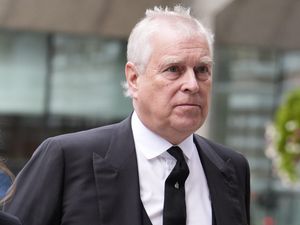UPDATE: The former Duke of York is now officially known as Andrew Mountbatten Windsor, a name change that took effect immediately on October 30, 2025. This significant announcement from Buckingham Palace marks a new chapter for the royal family and raises questions about the future of royal titles.
This change is particularly relevant now as it reflects ongoing discussions about the royal family’s identity and legacy. The decision to adopt the Mountbatten Windsor surname stems from a long history involving the royal family’s naming conventions and personal choices.
The name Mountbatten-Windsor was first established in 1960 when Queen Elizabeth II declared that direct descendants, excluding those with royal highness titles, would use this surname. This decision was made to honor her husband, Prince Philip, who had expressed frustration over the royal family’s naming conventions.
Details reveal that the surname Mountbatten-Windsor has a rich history, with its first official appearance noted in 1973 during the marriage of Princess Anne. The name has been used by various members of the royal family, including the Duke and Duchess of Cambridge and the children of the Duke and Duchess of Sussex, who previously used the surname until recently.
Interestingly, Buckingham Palace’s recent statement about Andrew’s new name did not include a hyphen, leading to inquiries about the official styling. A palace spokesperson clarified, “Andrew Mountbatten Windsor was the name agreed.”
This latest name change is part of a broader narrative surrounding the royal family’s evolution, especially as it transitions through generational shifts. The royal family has historically adapted its identity, most notably when King George V changed the family name from Saxe-Coburg-Gotha to Windsor in 1917 due to anti-German sentiment during World War I.
As the royal family continues to modernize, the implications of these name changes resonate deeply with public sentiment. The adoption of Mountbatten Windsor highlights the blend of tradition and contemporary relevance within the monarchy.
What happens next? With Andrew Mountbatten Windsor now officially recognized, attention will likely turn to how other royal members will adapt to these changes. The implications for royal titles and surnames may be reconsidered as the family prepares for the future, especially with the impending transition of power to the Prince of Wales.
As discussions about royal identity intensify, the world watches closely. This development is not just a name change; it symbolizes a shift in the narrative of the British royal family.
Stay tuned for more updates as this story continues to develop.







